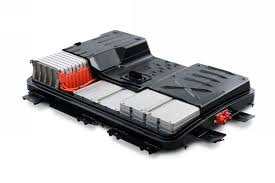(Note, all dollars are $US).
The flow of analysis about battery storage from big-end investment banks continues apace. Last week it was HSBC and Citigroup with ground-breaking reports – which we wrote about here and here. UBS also jumped in on the act too.
Why is this so? Well, according to UBS, interest from both investors and corporates has accelerated in recent months. That’s because the big end of town is suddenly alive to the opportunities of a technology that will likely be even more disruptive than solar. And the key is in the forecast on costs.
Citigroup last week cited $230/kWh as the key mark where battery storage wins out over conventional generation and puts the fossil fuel incumbents into terminal decline.
UBS, in a report based around a discussion with Navigant research, says the $230/kWh mark will be reached by the broader market within two to three years, and will likely fall to 100/kWh.
And it predicts that the market for battery storage will grow 50-fold by 2020, mostly in helping households and businesses consumer more of their solar output, but also at grid scale and with electric vehicles.
So here are some highlights gleaned from the UBS discussion with Navigant:
Navigant estimates the cost of materials going into a battery at the Tesla Gigafactory on a processed chemical basis (not the raw ore) is $69/kWh [this metric is per kW per hour of operation].
 The cost of the battery is only ~10-20% higher than the bill of materials – suggesting a potential long-term competitive price for Lithium Ion batteries could approach ~$100 per kWh. Tesla currently pays Panasonic $180/kW for their batteries, although conventional systems still selling for $500-700/kWh. But Navigant says that the broader market place will reach the levels Tesla is paying in the next two to three years.
The cost of the battery is only ~10-20% higher than the bill of materials – suggesting a potential long-term competitive price for Lithium Ion batteries could approach ~$100 per kWh. Tesla currently pays Panasonic $180/kW for their batteries, although conventional systems still selling for $500-700/kWh. But Navigant says that the broader market place will reach the levels Tesla is paying in the next two to three years.
A typical ‘load shifting’ 4-hour battery (designed to address the afternoon/evening peak) costs anywhere from ~$720-2,800/kWh, depending entirely on the scale of the Lithium Ion battery employed and the size of order.
The average $500-700/kWh for a typical battery is probably closer to the $2,000-3,000/kW when including the balance of the system costs ( around $400-500/kW), with a trend towards around $1,500/kW within the next 3-years. Navigant estimates the global market for batteries will grow from 400 MWh in 2013 (ie – 100 MW assuming 4-hour systems), to 20GWh (or around 5GW/yr) by 2020, globally.
UBS believes that the ‘merchant’ entry of batteries for wholesale purposes on the grid remains a few years off. Some above-market PPAs will be supported by utilities looking to use the technology to balance their grids but UBS believes commercialisation of battery storage will remain biased towards ‘short-usage’ needs, and by businesses looking to clip their ‘peak’ usage charges.
Still, over the long run, the advantages of scale will mean that utility-scale storage will evolve much more rapidly compared to the residential product.
As for the market for batteries, UBS cites three sub-sectors:
Transportation: low-cost, high-density, low-weight batteries. We emphasize this sector is likely to take a different direction from utility solutions.
Utility-scale: The main focus, with the primary consideration for these solutions being their ability to deploy quickly, into high density populations without contributing to air or water permitting hassles.
Distributed resources: in both commercial and industrial, and residential applications. “While many would point to the ability to move ‘off the grid’ entirely, we suspect the economics are unlikely palatable. Rather, the ability to clip ‘peak’ demand contributions by industrial customers is particularly notable. “
As for the question of which technology, Navigant expects lithium ion to remain the market leader for grid as well as small-scale storage for the next ten years. The main risks remains the uncertainty on input costs for Lithium, as well as Cobalt and Graphite, where Navigant thinks the greater “pinch points” await.
Other technologies being considered include flow batteries, such as advanced lead acid carbon, which are also functionally well suited for grid storage/long duration applications. Newer chemistries, such as the currently under research lithium sulfur and magnesium-Ion batteries may gain traction by early next decade.
Beyond batteries, pumped hydro faces the problem of limited favorable locations available, but fly wheels and compressed air storage (combined – and dispatched through gas turbines) may yet find their respective niches, although could well be excluded from ongoing state processes to kick-start the battery sector.
“In the end, lower prices are coming, but the technology is not yet clear,” UBS notes.
And, it quotes Navigant researcher Sam Jaffe in this clear point, that battery storage is coming now.
Jaffe said most of his ten years in the sector had been “sitting at conferences hearing the same presentations from the same people about the same hypothetical benefits of energy storage.
”But I see a very important change in the last two years where most of the presentations at these conferences are now talking about actual deployment of storage. So what has been a hypothetical concept for so long is now becoming a real business.”
As Jaffe noted, the $180/kWh price paid by Tesla compares to about $1500/kWh even five years ago, maybe seven years ago when it was $1200 to $1500 per kilowatt-hour. “So $180 per kWh is the price of those batteries, not the manufacturing cost but the price that they’re paying for them,” he said..
He also made this point about the comparison between battery storage and gas-fired peaking plant:
“If you assume that we’re at around a $200 per kilowatt- hour price point today for high quality Lithium-Ion batteries that are going to last ten years under frequent cycling, and if you wanted to build a very large peaker plant with four hours of energy duration behind it, it would be about $1400 per kilowatt on those costs.
“Interestingly, that’s actually pretty comparable to the cost of building a natural gas fired peaker plant. Keep in mind, you’re not buying fuel for batteries – you’re essentially just arbitraging low and high cost of daily electricity.”
And later:
“A lot of people think you tie a battery to a solar panel and boom you’ve got a power plant, which is technically true but managing it at the central grid level makes it much more than that.
“For instance, I’m aware of one project where the idea was to put a multi-gigawatt hour battery plant at a spot in a suburban location, where the local utility was looking for a natural gas peaker plant.
“However, they knew it was going to be an enormous uphill climb to site that peaker plant because nobody wants to live next to a smoke stack. People are more than willing to live next to a warehouse full of batteries.”
And this on its overall impact on the grid:
“We essentially just developed a grid over the last 150 years throughout the world that immediately consumes what it produces and manages that by essentially overproducing a little bit so that you can make sure you have some backup in case of unforeseen outages.
“But if you have energy storage then you don’t need to over produce, and you don’t need backup reserves. It allows you to store electricity and use it when you need it. “
That is a fundamental change. And it is happening now.








